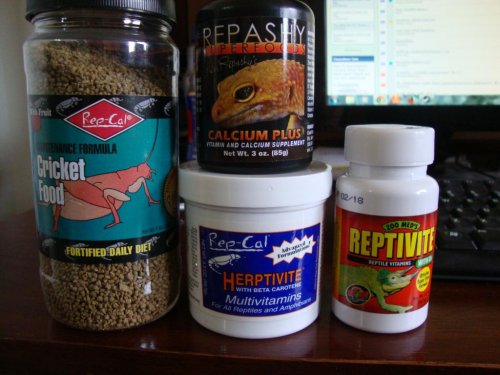TheronJ
New Member

Chameleon Info:
Your Chameleon - Female Veiled Chameleon, young, have had her for 2 weeks
Handling - Once every 2-4 days. Short periods of time while feeding mealworms
Feeding - Crickets, 3-6 daily depending on how many she'll eat. The crickets eat Rep-cal maintenance formula cricket food and potato.
Supplements - I've dusted them with Zoo med reptivite once. I've heard doing so once monthly is good.
Watering - Reptifogger terrarium humidifier and twice daily misting with a spray bottle.
Fecal Description - Mushy brown log with a smaller white log, about 1/3 the size. Not tested for parasites.
History - Recently obtained from Petco. Seems to be in good health and shed two days ago.
Cage Info:
Cage Type - Reptibreeze open air enclosure from the Zoo med chameleon kit.
Lighting - UVB and heat lamp from zoo med chameleon kit on a timer from 9am to 9pm
Temperature - 85f in basking spot, 75f-ish elsewhere. Gets down to about 65f at night in the coldest part of the enclosure 68 at the warmest.
Humidity - The reptifogger humidifier keeps it at about 50% humidity but my chameleon likes to hang out above the spout that feeds in the fog, sometimes drinking from it
Plants - Plastic plants only.
Placement - Warmest room in the house, some air flow, one heater vent in the room, opposite side of her enclosure.
Location - Kenai Alaska
Current Problem - My chameleon is very dark while basking sometimes. I'm not sure if it's normal.





